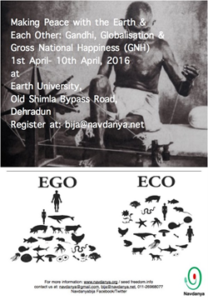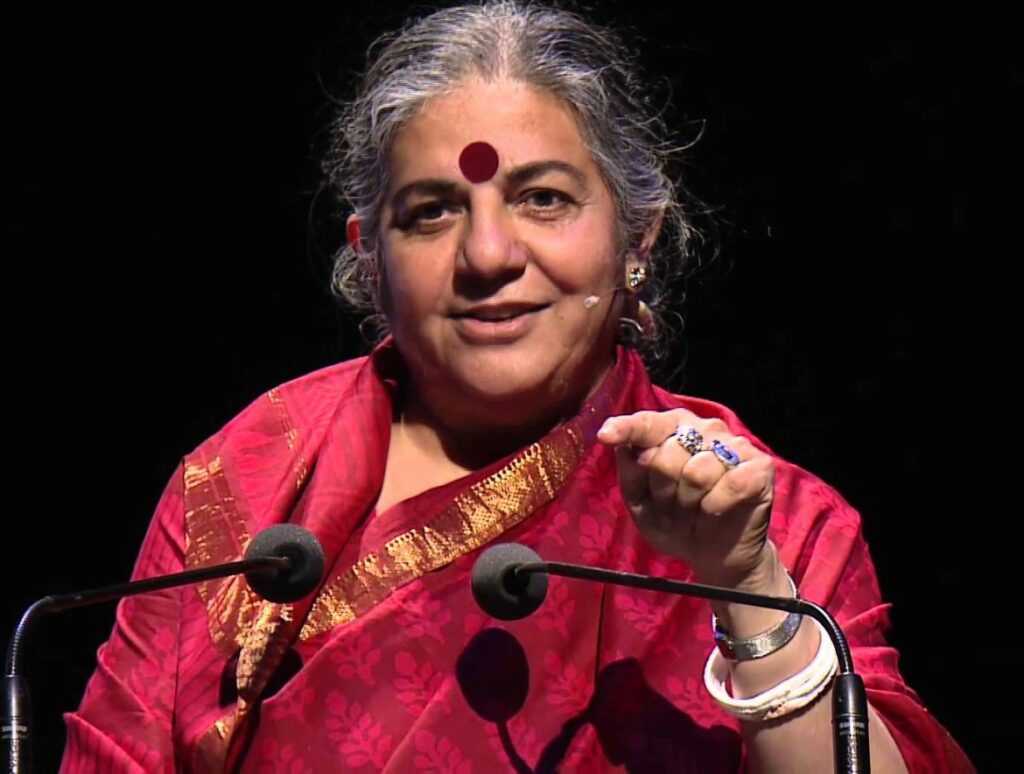
Vandana Shiva (Seeds of life – Navdanya)
“SEEDS OF LIFE“
It’s 1 pm! It’s time to sit at the eating table and eat our preferred dish made of pasta, rice, vegetables or meat/diary-based products. Do we know what are we really eating? When Vandana Shiva told me: during the process of agriculture industrialisation our food base has passed from 10,000 to 10 species, I was literally shocked. Only three plant species – rice, maize and wheat – contribute nearly 60 percent of calories obtained by humans from plants. More and more studies (by United Nations and FAO) have underlined how big the loss of biodiversity is, that has happened during the last century. That’s a big problem! That’s a big problem for us, and especially for future generations: Nature is our first “provider of services,” and without it and its biodiversity humanity is bound to fail inexorably. Loss of Biodiversity is like a high-speed train difficult to stop, triggered especially by the greed for power and the ongoing “insectageddon” (that’s the way Vandana describes the massive deaths of pollinators due to the massive use of pesticides in agriculture). That’s why a cultural change is needed and that’s why Navdanya, the movement of farmers founded in India by Vandana Shiva started the Earth University. Its mission? Building a poison-free, fossil fuel-free food and farming by 2030 to avert species extinction and climate catastrophe.
“Biodiversity is life. And all biodiversity begins as seed”
These are the words Vandana started her interview with us. We all know that seeds (in agriculture and in thinking) are the starting point. Without good seeds we cannot have good yields. Without flexible/diverse seeds we cannot have flexible/diverse yields necessary for facing Climate Change. Vandana and Navdanya team are doing a great job in awakening people and protecting the incredible heritage of Nature. What are the main causes of Biodiversity loss? What are the solutions? How does Navdanya movement work and how to join Earth University? How to achieve Zero Hunger (SDG goal 2), Good Health and wellbeing (SDG goal 3) at the same time? What about Navdanya’s project in Italy? Vandana Shiva, environmental activist, founder of Navdanya movement, answered to these and other questions.

For further details –
http://www.navdanya.org/about-us
INTERVIEW – (June 2019)
This interview was made in May 2019 and published in June 2019 on www.lteconomy.org
Subject: Biodiversity and seeds
By Dario Ruggiero, Founder of Long Term Economy
Highlights
- Biodiversity and seed are the sites for life to continue to evolve in freedom.
- The Biotechnology industrial has been trying to grab the earth’s biodiversity… and then impose GMOs linked to patents to collect royalty.
- Industrial Agriculture, the monocultures it spreads, and the poisons it uses are the main cause for the erosion of biodiversity and extinction of species. The Amazon rainforest, one of the richest biodiversity ecosystems, is being destroyed for growing GMO soya.
- What is called “organic” today is the distillation of centuries of indigenous peasant knowledge of India and the sophisticated understanding of how living systems works.
- We have changed the metric from ‘yield per acre’ to Health per Acre and Nutrition per Acre.
- The SDG goal 1 on No-Poverty can be achieved by making a transition from extractive economies which leave the Earth and Farmers poorer, to circular economies based on the “law of Return.
- The Poison-free Food and Farming campaign was launched in Italy in March 2019, … which saw the participation of Italian parliamentarians, who are promoting pesticide-free organic agriculture, and representatives of local movements in northern Italy.
- Gandhi has been a deep inspiration for Navdanya, and in October we are offering a course on Gandhi and Globalisation at the Earth University.
“Biodiversity and seed are the sites for life to continue to evolve in freedom”
⇓
Question 1 | Why biodiversity
Biodiversity is life. And all biodiversity begins as seed, which regenerates, reproduces, multiplies, spreads life in diversity and abundance. In 1992 the world committed to protect Biodiversity through the United Nations Convention on Biodiversity at the Earth Summit in Rio de Janeiro. This is international law, but has been ignored because the Biotechnology industrial, which is the old Poison Cartel of Hitler’s Germany, has been trying to grab the earth’s biodiversity and pirate indigenous knowledge and seeds of farmers, and then impose GMOs linked to patents to collect royalty. They call biodiversity the “green oil of the future”. For them life is merely raw material. In the process, they have shrunk our food base from 10,000 species to 10. Agriculture has reduced to 4 crops-corn, soya, canola, cotton which are genetically modified. And a Poison Cartel of 3 -Bayer with Monsanto, Dow with Dupont , Syngenta with Chemchina- wants to control our seed, our agriculture, our food, and life on earth. Biodiversity and seed are the sites for life to continue to evolve in freedom.
“Seed is life and its biodiversity must be protected”
Vandana Shiva the founder of Navdanya in the community seed bank at the navdanya biodiversity farm
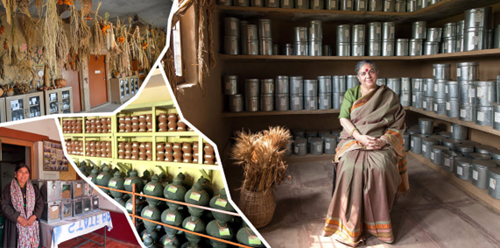
⇓
Question 2 | Behind the loss of biodiversity
Hmmm, from 10,000 to 10 species… It’s a terrible figure that is confirmed by more and more studies which show a loss of biodiversity (e.g. UN’s Planet living Reports). What are in your opinion its main causes?
Industrial Agriculture, the monocultures it spreads, and the poisons it uses are the main cause for the erosion of biodiversity and extinction of species. The Amazon rainforest, one of the richest biodiversity ecosystems, is being destroyed for growing GMO soya. The insecticides have killed insects and contributed to an “insectageddon”. Bees and Butterflies and birds are being killed by poisons unleashed for a “war on bugs”. Plant biodiversity is disappearing because of monocultures and the use of weedicides like Roudup (glyphosate) designed to kill everything green.
The Food Smart City Movement
http://www.navdanya.org/site/living-food/navdanya-living-food
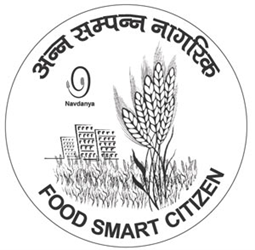
Source: Navdanya
“What is called “organic” today is the distillation
of centuries of indigenous peasant knowledge of
India and the sophisticated understanding of how living systems works”
⇓
Question 3 | Organic agriculture and global poulation
The different chemical-free, poison-free alternatives, all share the foundation of what is now being called the science of Agroecology, ecological principles applied in agriculture. Organic started to mean “chemical free” in a period when poisons in food and farming have become life threatening to people and planet .
Organic grew as a chemical free alternative to the chemical warfare on our farms, our kitchens, our plates. In particular ,“Organic Farming” is the name given to ancient Indian farming systems based on principles of diversity, gratitude and giving. It evolved a century ago from India’s 10,000 year indigenous Agroecological sciences when Albert Howard, who was sent by the British in 1905 to “improve” Indian agriculture, found the soils fertile and no pests in the field. He decided to make the Indian peasant and the pest his Professors. On the basis of learning from nature and people he wrote his classic The Agriculture Testament.
Howard talks about how Indian peasants learnt to farm in “Nature’s ways” and made farming as permanent as the forest by applying Nature’s principles of diversity and law of return in agriculture. What is called “organic” today is the distillation of centuries of indigenous peasant knowledge of India and the sophisticated understanding of how living systems works. Our work in Navdanya shows that the organic way based on Biodiversity can grow nutritionally rich food for two times India’s population. Industrial farming is destroying the planet. There will be no food on a dead planet. – https://www.navdanya.org/attachments/Health%20Per%20Acre.pdf
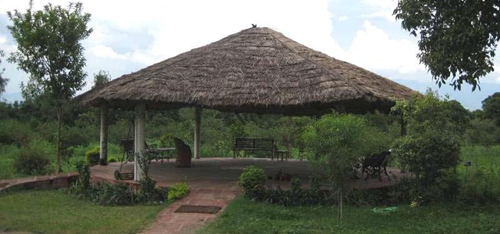
Question 4 | Agriculture network
Agriculture, or care for the land, must be a vital part of education in this evolutionary moment of species extinction and climate catastrophe. That is why we have started the Earth University at Navdanya’s Biodiversity farm in Doon Valley.
Agriculture must be based on the law of return. This is the circular economy, based on cycles of nature and solidarity within society.
http://www.navdanya.org/site/earth-university/earth-university
“We have changed the metric from ‘yield per acre’
to Health per Acre and Nutrition per Acre”
⇓
Question 5 | Ego-systemic vs Eco-systemic actions
Navdanya farmers have become sovereign in their seed and food. Navdanya saves, conserves, multiplies and distributes seeds of resilience and climate resilient crops that our farmers have bread such as Bhundi, Kalambank, Lunabakada. These helped rejuvenate agriculture after the Orissa Super cyclone, the Bay of Bengal Tsunami, cyclone Phailin and the Nepal Earthquake. In 2013 when Uttarakhand had unexpected flash floods and people lost their lives and homes, Navdanya was able not only help rebuild their villages and homes but able also to provide seeds to the villagers from the seeds saved by farmers and seed producers, helping farmers recover from the disaster and rebuild their means of livelihood.
We have changed the metric from “yield per acre” (which measures the weight of nutritionally empty commodities leaving the farm, not the state of the farm, the soil, the water, the farmer, not the true cost of production, nor the nutrition and quality of food) to a new one. We measure Health per Acre and Nutrition per Acre and can feed two times the population with healthy, nutritious food while conserving biodiversity and rejuvenating the soil . We can achieve Zero Hunger (SDG goal 2 ) and Good Health and wellbeing (SDG goal 3) by being stewards of creation, not parasites and predators.
True cost accounting and our measure of Wealth per Acre shows that through Seed Soveregnty, Food Soveregnty and Agroecology, small farmers can earn higher incomes, instead of growing commodities at high costs and getting trapped in debt and being driven to suicide. More than 300,000 farmers have commited suicide in India since 1995. The violence to farmers and the Earth is one violence. Peace with the Earth, Peace with people is one peace. The SDG goal 1 on No-Poverty can be achieved by making a transition from extractive economies which leave the Earth and Farmers poorer, to circular economies based on the “law of Return”.
People across the world can come to the Earth University. They join the movement for Poison Free, Fossil fuel free Food and Farming 2030 to avert species extinction and climate catastrophe.
⇓
Question 6 | Gender Inequality
Women are the biodiversity and food experts, Women are the experts in economies of caring and sharing. Women will be teachers in the transition from a dead end trajectory leading to death to the path of life and well-being for all.
“We must take back the right to save seeds and biodiversity,
the right to healthy food and the right to protect the earth and its many species.
We must stop the theft of corporations to the detriment of the poor and nature!”
⇓
Question 7 | Navdanja’s projects in Italy
What about Navdanja’s projects in Italy (projects and obstacles)? What do you suggest to small farmers in Italy?
Since when the works of the International Commission for the future of Food and Agriculture started in the early 2000’s, with the publication of the Manifestos on the future of food, seeds, climate and knowledge systems, Navdanya has been developing a wide and vibrant network of experts, policy makers, farmers, seed savers, local movements, and producers globally. Navdanya International was created in Italy in 2011 to strengthen Navdanya’s global outreach. Its publications, campaigns, communications, conferences and advocacy actions have been focused on exploring the context of our food systems and its connections with soil, climate resilience, biodiversity, equity and social justice. This multidimensional, multi-sectorial holistic approach is clearly shown, e.g. by the collaborations with and linking together of movements working on apparently diverse issues – from seed, to food, health, agroecology, climate, local circular economies and economic democracy. Navdanya International’s recent work has seen, for example in Italy, the rise of a national mobilization around its Food for Health Manifesto and the Poison-free Food and Farming campaign, which have become powerful tools for creating convergence among consumers, producers and stakeholders for a common vision of sustainable development and are also spurring dialogue and action towards healthy food and agriculture systems. The Poison-free Food and Farming campaign was launched in Italy in March 2019, through a press conference at the Italian Chamber of Deputies which saw the participation of Italian parliamentarians, who are promoting pesticide-free organic agriculture, and representatives of local movements in northern Italy, that are suffering the impact of intensive monocultures and protesting against the massive use of pesticides that is poisoning the countryside. This was followed by an ecological mobilization tour that touched several destinations, mainly in those same areas.
Ulrich Veith, Mayor of Mals, who had also attended the press conference in Rome in March, welcomed me and the Navdanya’s International team on 11 April in his village of Mals in Venosta valley. The Mayor, recently promulgated a referendum to ban the use of pesticides in the municipality, from which a municipal regulation was produced and then blocked by the court of auditors. The meeting was an opportunity to jointly sign a renewed commitment for an immediate transition to agro-ecological production models that respect biodiversity and counter climate change. Navdanya International was also part of the recent Marcia Stop Pesticidi, a bottom up mobilization born in Veneto, in the earth of Prosecco, and spreading all over Italy.
A consolidated front formed by a great diversity of stakeholders is taking shape in Italy, as it has happened for a recent policy advocacy action initiated by Navdanya International and ISDE – International Society of Doctors for the environment. An open letter directed to the Parliament against the Italian “Emergency Decree”, which allowed public authorities to act in derogation of important regulations on environmental protection standards, and was signed by a wide coalition of civil society movements, scientists, doctors, jurists and economists. In spite of this opposition, the decree has passed, which once again demonstrates how the issue of chemicals in our food is a matter of democracy and whenever people are given a chance to voice their democratic rights, there is an opposite reaction to silence them, which violates, for instance both the subsidiarity and the precautionary principles of the European Union. But where governments can fail, we, the people, still have the possibility not to fail the Earth. Awareness is already spreading among small farmers, that alternatives do exist and are based on the regeneration of soils through agroecology, the preservation of biodiversity, the promotion of short supply chain food systems. Consumers can in turn support small farmers. Each of us can reverse the current disastrous trend with our little big daily choices: we can change the world at every bite we eat, at every outfit we choose, at every trip, at every purchase. We must take back the right to save seeds and biodiversity, the right to healthy food and the right to protect the earth and its many species. We must stop the theft of corporations to the detriment of the poor and nature.
⇓
Question 8 | Tips for farmers
Your model reflects Gandhi’s Swadeshi. What do you suggest to young farmers and local communities to preserve their resilience on food?
